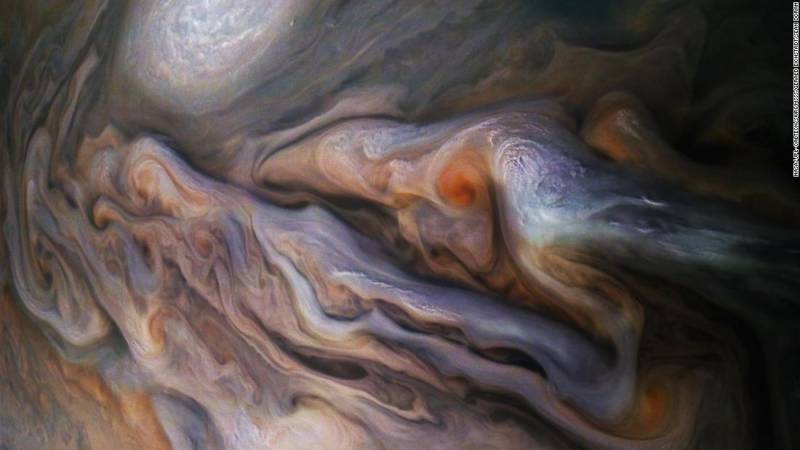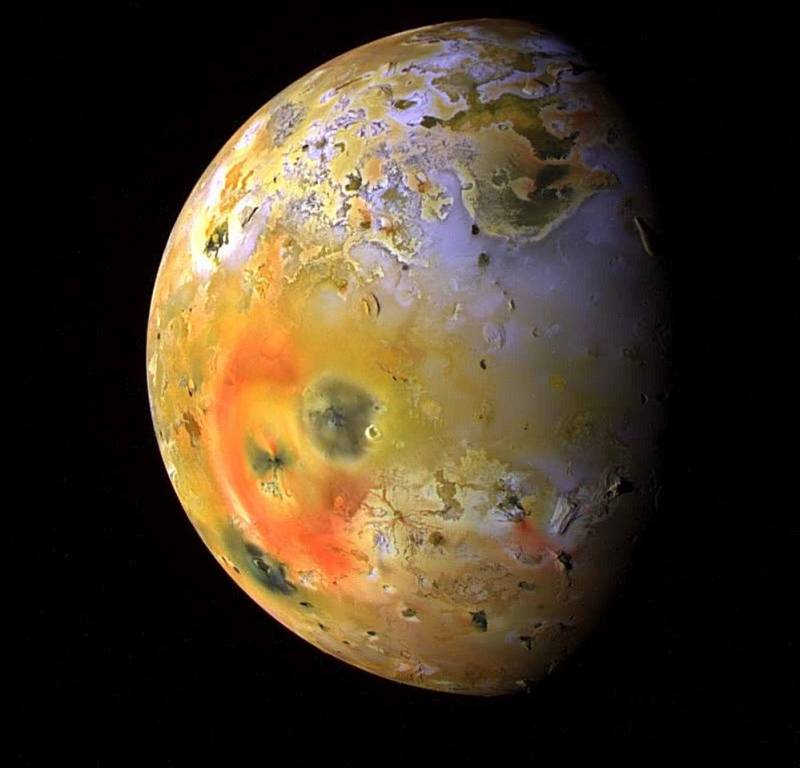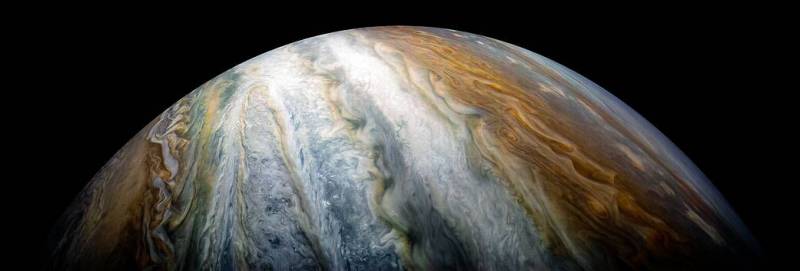Like an artist whose pleased patron commissions more masterpieces, NASA's Juno spacecraft just earned an extension after four extraordinary years of discovery. And if you've seen any of Juno's images of Jupiter, you may find the artist reference apt.Before the Juno mission, little was known about the wind and cloud systems of the polar regions. The solar-powered robotic probe, whose adventure exploring the atmosphere and interior of the planet Jupiter was scheduled to end this July, has been granted a four-year extension, through September 2025. It’s mission has also expanded, and it will now investigate the planet's system of rings and three of its large and remarkable moons.
Juno’s Primary Mission
Since its arrival at Jupiter in 2016, Juno’s observations have focused on dynamics that scientists previously knew very little about: the gas giant’s complex atmosphere and storm systems at the high latitudes of the northern polar region.
Juno has captured breathtaking images of Jupiter’s cloud systems and other atmospheric phenomena at very close range. It's also probed beneath the visible cloud layers.

Using instruments that measure Jupiter’s powerful magnetic field and gravitational variations, Juno has divined processes and structures deep within the gaseous world. Among its many discoveries are stupendous strokes of lightning exploding dozens of miles beneath the planet's thick layers of clouds; an abundance of water welling up at the equator; mighty auroras surging high in the atmosphere; “packs” of Earth-sized storms spinning around both poles; and wind systems whose roots are buried 1-2,000 miles below Jupiter’s cloud tops.
To get close enough to Jupiter to do what it came for, Juno must pass through bands of intense radiation, captured in Jupiter’s surrounding magnetic field. To minimize exposure to radiation damage, NASA placed Juno in a highly elliptical orbit that keeps it well outside the radiation belts most of the time. At the far-flung end of its elongated orbit, Juno is 5 million miles away from Jupiter, 20 times farther than our moon is from Earth.
Once every 53 days, Juno’s orbit carries it swiftly through the danger zone and close to Jupiter, passing only 2,600 miles above the cloud tops in the northern regions, offering a view like no other in the solar system.
With each close pass by Jupiter, Juno’s orbit alters slightly due to interaction with the planet’s gravity. Over time, its point of closest approach has migrated northward, toward the pole, while the long loop of its extended orbit has shifted closer and closer to Jupiter’s large Galilean moons.
Targeting Jupiter’s Mystifying Moons
Over the four additional years of Juno’s extended mission, its shifting orbit will send it past three of Jupiter’s Galilean moons: Ganymede, Europa and Io. No spacecraft has flown close to these small worlds since the Galileo probe two decades ago.
Ganymede will be the first fly-by target, on June 7 this year. Ganymede is the largest moon in the solar system, half again bigger than Earth’s moon. Its surface is a patchwork of rough, ancient, cratered terrain overlapped by smooth, probably icy regions. It is the only moon in the solar system with a magnetic field of its own, and its poles are lit up with auroras. Strong evidence exists that a liquid water ocean lies hidden beneath Ganymede’s surface.

Io is the most volcanically active moon in the solar system, with hundreds of sulfurous eruptions spewing out lava and gas, in some cases dozens of miles into the sky. Volcanic Io will receive a pair of visits, on Dec. 30, 2023 and Feb. 3, 2024.
Most intriguing of all is Europa, which shelters a saltwater ocean beneath its icy crust. Europa’s ocean may be as much as 100 miles deep, and its waters are thawed by heat emerging from the moon’s interior. Scientists are excited by the possibility that within Europa’s ocean may exist conditions that could support life. On Sept. 29, 2022, Juno will have a close encounter with Europa.
During its extended mission, Juno will also fly through trails of ions shed into space by Io’s volcanoes, and plumes of water vapor erupting from Europa’s icy crust. By sampling the composition of Europa’s water vapor plumes, scientists hope to better understand the nature of the moon's ocean.
Recon for Upcoming Missions
Extending Juno’s exploration to include the Jovian moons will help pave the way for two upcoming missions: NASA’s Europa Clipper and the European Space Agency’s JUICE, scheduled to launch later this decade. Both of these spacecraft will investigate the Galilean moons in great detail, with a special focus on Europa and its tantalizing ocean.

By the end of its extended mission in 2025, Juno will have orbited Jupiter 76 times over eight years and collected enough data to keep scientists busy for many more years to come.
Then, Juno will be deliberately driven into Jupiter’s atmosphere, where it will be incinerated in a fiery finale, its atoms forever becoming part of the world it has explored.



No comments:
Post a Comment